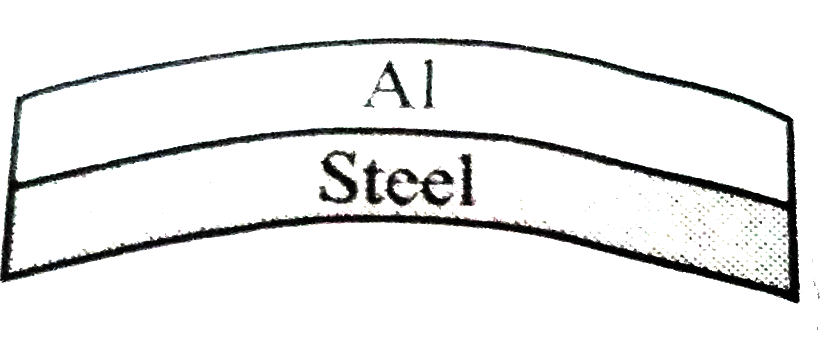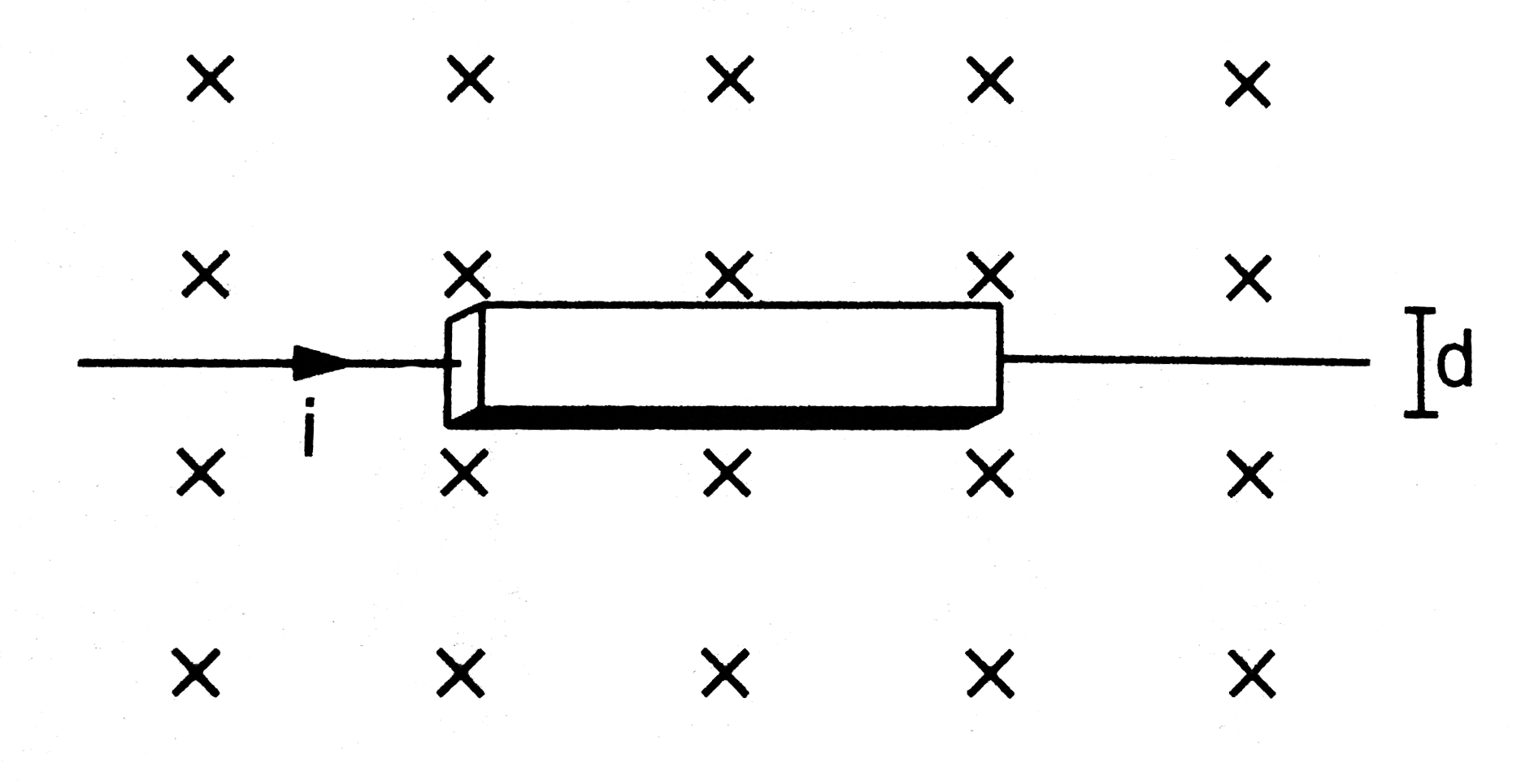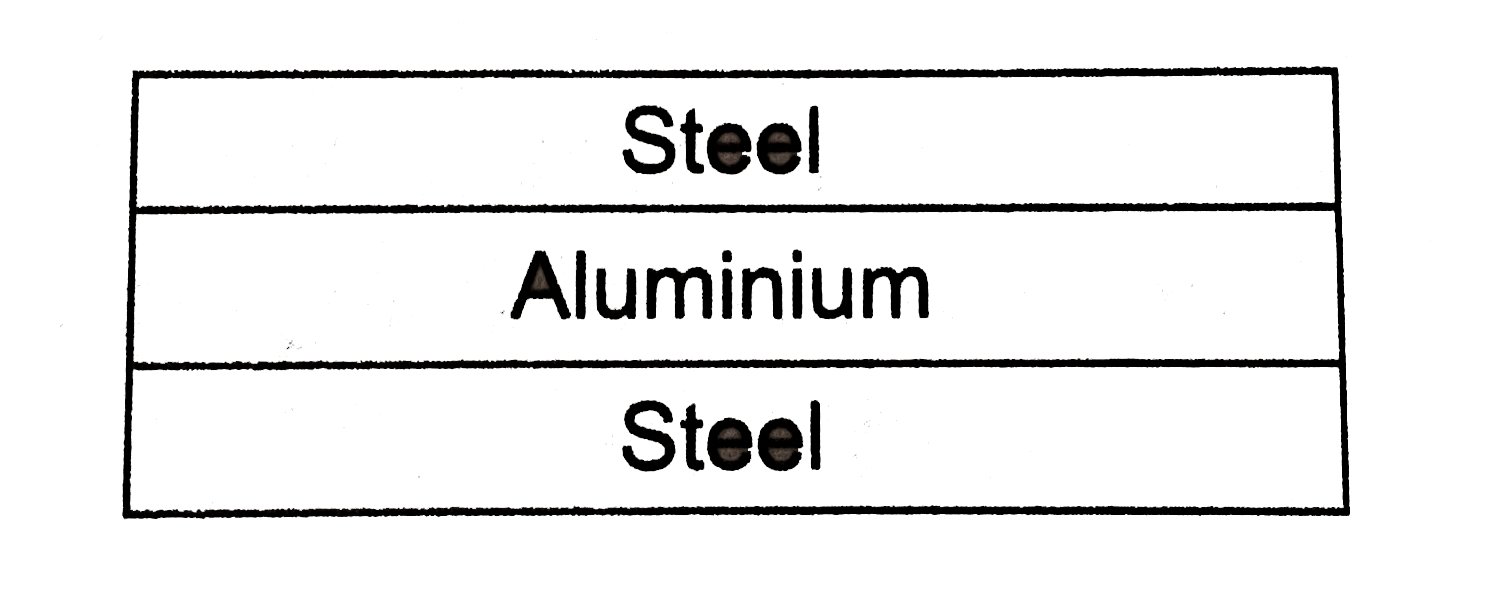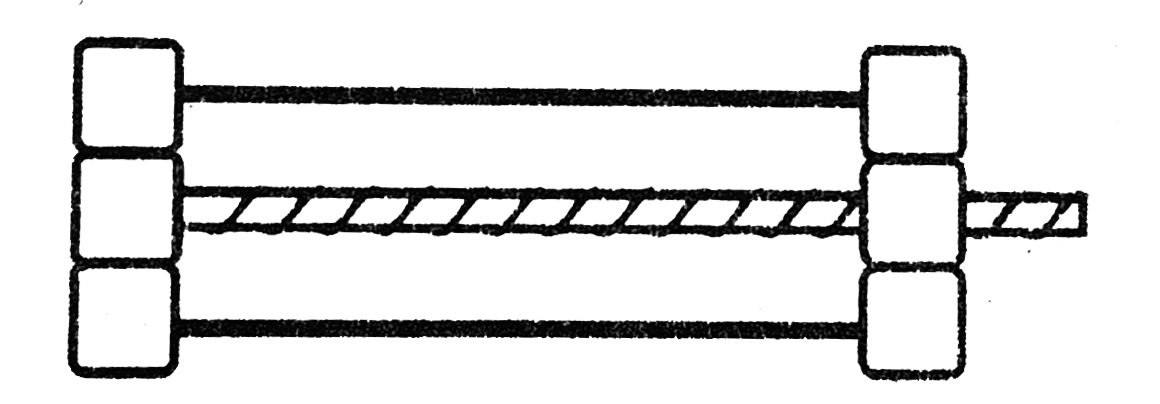A bimetallic strip made of aluminum and steel (αAl>αsteel) on heating the strip will a) remain straight b) get twisted c) will bend with aluminum on concave side d) will bend with steel on concave side.
remain straight
get twisted
will bend with aluminium on concave side
will bend with steel on concave side.
The correct Answer is:D
Since αal>αsteel so on heating the bimetallic strip, aluminium strip will expand more than that of steel strip.
Due to it, steel strip will bend on concave side.

Topper's Solved these Questions
- THERMAL PROPERTIES OF MATTERBOOK - NCERT FINGERTPS ENGLISHCHAPTER - THERMAL PROPERTIES OF MATTEREXERCISE - Asseration and Reason
10 Videos
- THERMAL PROPERTIES OF MATTERBOOK - NCERT FINGERTPS ENGLISHCHAPTER - THERMAL PROPERTIES OF MATTEREXERCISE - Specific Heat Capacity
5 Videos
- THERMAL PROPERTIES OF MATTERBOOK - NCERT FINGERTPS ENGLISHCHAPTER - THERMAL PROPERTIES OF MATTEREXERCISE - Higher Order
8 Videos
- SYSTEM OF PARTICLES AND ROTATIONAL MOTIONSBOOK - NCERT FINGERTPS ENGLISHCHAPTER - SYSTEM OF PARTICLES AND ROTATIONAL MOTIONSEXERCISE - NCERT Exemplar
8 Videos
- THERMODYNAMICSBOOK - NCERT FINGERTPS ENGLISHCHAPTER - THERMODYNAMICSEXERCISE - Assertion And Reason
15 Videos
Similar Questions
A bimetallic strip made of aluminium and steel (αAl>αsteel) on heating the strip will
View SolutionA bimetallic strip is formed out of two identical strips one of copper and the other of brass. The co-efficients of linear expansion of the two metals are αC and αB. On heating, the temperature of the strip goes up by △T the strip bends to form an are of radius of curvature R. Then R is
View SolutionTwo identical rectangular strips. One of copper and the other of steel, are riveted together to from a bimetallic strip. On heating. the strip will
(αcopper>αsteel)
View SolutionTwo straight metallic strips each of thickness t and length l are rivetted together. Their coefficients of linear expansions areα1andα2. If they are heated through temperature ΔT, the bimetallic strip will bend to form an arc of radius
View SolutionA bimetallic strip of thickness d and length L is clamped at one end at temperature t1. Find the radius of curvature of the strip if it consists of two different metals of expansivity α1 and α2(α1>α2) when its temperature rises to t2∘C.
View SolutionA currrent I is passed through a silver strip of width d and area of cross section A. The number of free electrons per unit volume is n. (a) Find the drift velocity v of the electrons. (b) If a magnetic field B exists in the region as shown in what is the average magnetic force on the free electrons? (c) Due to the magnetic force, the free electrons get accumulated on one side of the conductor along its length. This produces a transverse electric field in the conductor which opposes the magnetic force on the electrons. Find the magnitude of the electric field which will be the potential diference developed across the width of the conductor due to the electron- accumulation? The appearance of a transverse emf, when a current-carrying wire is placed in a magnetic field, is called hall effect.

View SolutionTwo steel rods and an aluminum rod of equal length l0 and equal cross section are joined rigidly at their ends as shown in the figure below. All the rods are in a state of zero tension at 0∘C. Find the length of the system when the temperature is raised to θ. Coefficient of linear expansion of aluminum and steel are αaandαs respectively. Young's modulus of aluminum is Ya and of steel is Ys.

View SolutionA brass disc fits snugly in a hole in a steel plate. Should you heat or cool the system to loosen the disc from the hole ? given that αb>αFe.
View SolutionA brass disc fits snugly in a hole in a steel plate. Should you heat or cool this system to losen the disc from the hole ? given that αb>αFe.
View SolutionA steel bolt of cross-sectional area Ab=5×10−5m2 is passed through a cylindrical tube made of aluminium. Cross-sectional area of the tube material is At=10−4m2 and its length isl=50cm. The bolt is just taut so that there is no stress in the bolt and temperature of the assembly increases through △θ=10∘C. Given, coefficient of linear thermal expansion of steel, αb=10−5/∘C.

Young's modulus of steel Yb=2×1011N/m2
Young's modulus of Al,Yt=1011N/m2, coefficient of linear thermal expansion of Alαt=2×10−5/∘C
The tensile stress in bolt is
View Solution